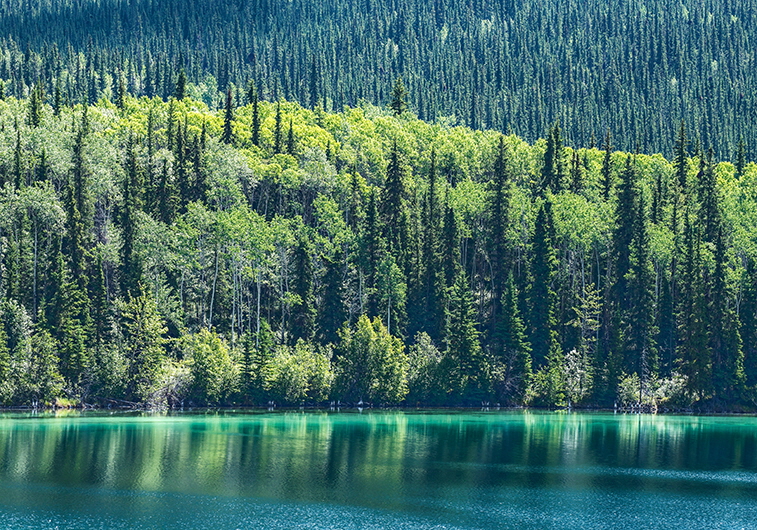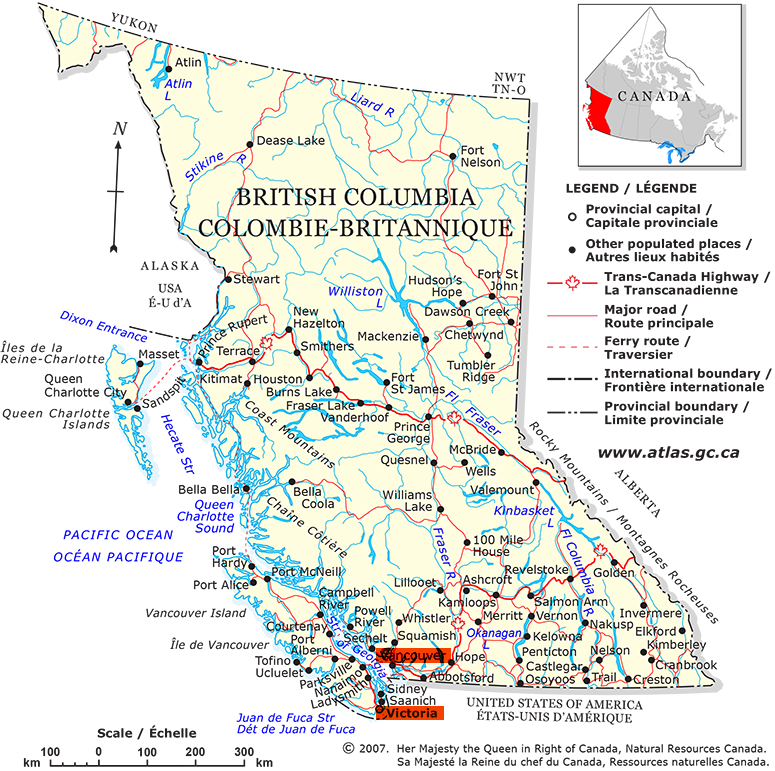|
Home > BC
 English Bay, Vancouver, BC Introduction to British ColumbiaOn Canada’s west coast, British Columbia (BC) is known for its natural beauty. In 1871, BC became the sixth province of Canada with a controversial name given by Queen Victoria. BC’s capital is Victoria and its largest city is Vancouver, the third largest metropolitan area in Canada. BC's economy includes logging and mining. It has major Pacific ports. Mild weather allows rich agriculture in the Fraser and Okanagan Valleys, and encourages all-season outdoor recreation and tourism. BC has a 25,000 km island-dotted coastline along the Pacific Ocean, and its freshwater lakes, rivers and streams cover 1.8 million hectares. Over 90 species of wild and cultured fish, shellfish and plants are harvested from fresh and marine waters. The province has three main mountain ranges. Two thirds of BC’s area is covered by forest; hemlock dominates coastal areas, while lodgepole pine and spruce are the most common trees in BC’s interior. AreasCariboo Chilcotin CoastBella Coola Valley Fraser CanyonFraser River & Thompson River Canyons KootenayColumbia Valley SimilkameenSunshine CoastOkanaganDesert Centre Vancouver Island & IslandsBroken Group Islands Cities, Towns & CommunitiesLower Mainland(Fraser Valley, southern coastal mainland, central coastal islands and Sunshine Coast) Abbotsford Fraser ValleyAbbotsford Sunshine CoastGibsons Cariboo Chilcotin CoastAlexis Creek Interior(Okanagan, Fraser Canyon, Armstrong Thompson-NicolaAshcroft Fraser CanyonBoston Bar Similkameen CountryKootenaysBeaverdell North(Includes Haida Gwaii) Atlin Haida Gwaii(Formerly Queen Charlotte Islands) Haida Gwaii Vancouver Island &
|









